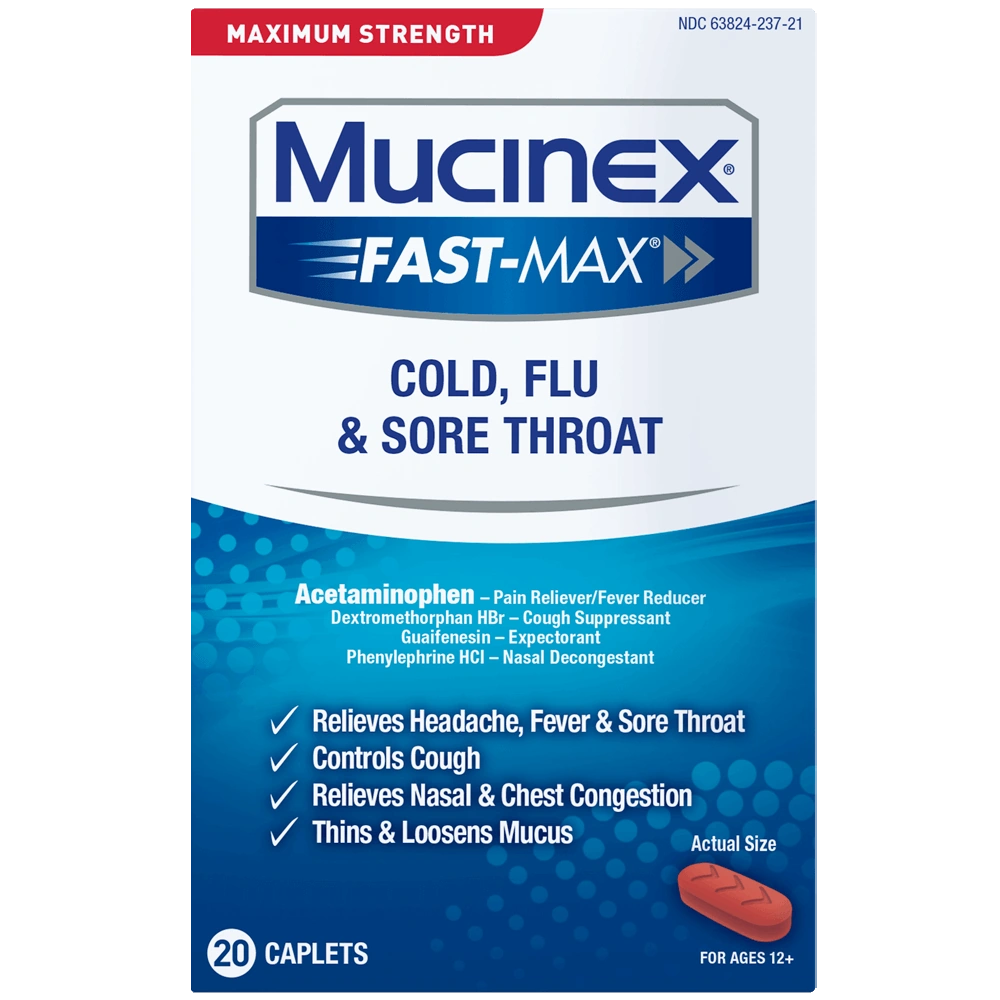Let’s Start with Some Real Talk
Ever stare at your medicine cabinet, fighting back a groan, wondering, does regular Mucinex have acetaminophen? If you have, trust me—you’re in good company. The cold and cough aisle is wild. You’ve got bottles saying “maximum strength,” “multi-symptom,” “for chest congestion,” and half the time you just want something to stop that gunky, hacking cough… without accidentally doubling up on your pain meds or frying your liver by mixing the wrong stuff. Sound familiar? You’re right to be cautious.
I learned all this the hard way, by the way. (Picture me, sniffling, peering suspiciously at an army of orange-lidded bottles.) So yes, I promise you, this isn’t going to be another boring textbook breakdown. Let’s get into what’s in your Mucinex, what’s not, and how to stay safe when you’re mixing and matching relief—just like you’d ask a friend who always reads the whole label.
Peeking Inside the Box
All right, so here’s where most folks trip up: regular Mucinex, the original stuff, does not contain acetaminophen. Let that sink in for a second. All this brand does is help you battle the dreaded mucus monster in your chest. It’s guaifenesin—the expectorant hero—that’s doing all the work, loosening up that sticky, annoying stuff so you can cough it out easier and actually breathe like a human again.
If you pick up a box of just plain Mucinex (no “Max Strength,” no “Multi-Symptom”), that’s what you’re getting. Think of it like a single-gear bike: it moves one way, and one way only, and that’s clearing gunk out of your lungs. There’s no acetaminophen, no pain relief, no fever reducer hiding inside. Nada. That’s a win if you already take Tylenol for headaches or aches—you won’t accidentally double up. (But hey, keep reading, because not every Mucinex is a one-ingredient wonder.)
So…What’s Guaifenesin, Anyway?
Short version? Guaifenesin is like your chest’s cleaning crew. If you’re hacking up sticky gunk, this stuff thins it out and helps you move it along. That’s all. It’s not battling pain, it’s not lowering fevers, it won’t stop you from sneezing. Simple, right?
Here’s a Quick Visual Guide
| Brand/Product | Main Active Ingredient | Contains Acetaminophen? | Good For… |
|---|---|---|---|
| Regular Mucinex | Guaifenesin | No | Chest congestion only |
| Mucinex Fast-Max/Severe Cold | Guaifenesin + Acetaminophen (plus others) | Yes | Multi-symptom flu/cold (pain, fever, cough, congestion) |
| Tylenol (generic) | Acetaminophen | Yes | Pain, headache, fever |
Why This Little Detail Matters
Let’s be honest: you probably care about this because you’ve heard one too many warnings about what happens if you take too much acetaminophen. (Liver: not happy. Trust me, you want your liver happy.)
But the drug aisle doesn’t make it easy. Maybe you’re nursing the world’s worst cold, you want results now, and you reach for whatever says “Mucinex”—but is it always just guaifenesin? Not at all. Some varieties, like their Fast-Max and Multi-Action lines, sneak in a cocktail of other goodies: pain relievers (acetaminophen), fever fighters, decongestants, and cough suppressants. Suddenly, you’ve mixed Tylenol and Mucinex and… oops… maybe doubled your max daily dose of acetaminophen without meaning to.
Here’s where it helps to know about both Does Mucinex have acetaminophen or ibuprofen in it and Which Mucinex does not have acetaminophen. Because knowing which products are safe to combine (and which will get you in trouble) is… well, it’s the difference between a peaceful nap and a 2 a.m. worried Google search about liver damage.
Mix-Ups: True Cold Med Confessions
Let me level with you—last winter, I was that guy. I grabbed a box of what I thought was regular Mucinex. But I’d actually nabbed “Fast-Max” and popped it with my trusty Tylenol. Thank goodness I checked the label before taking a second dose. Moral of the story? Even the best of us get confused by all the different boxes and branding when we’re sleep-deprived and stuffy.
That’s why you see so many questions in Google about does regular Mucinex have acetaminophen. You’re trying to avoid a mix-up. You just want relief, not extra stress. The good news: take a deep breath (if you can!). Here’s how it usually shakes out:
Regular Mucinex: The One-Job Wonder
If the box just says “Mucinex” and nothing else? It’s pure guaifenesin, no pain stuff—so you can pair it with Tylenol or ibuprofen as needed, just like normal. According to, you know, every label ever and verified on the official Mucinex ingredients page, unless “acetaminophen” is smack in the ingredient list, you’re in the clear.
Wondering about Does Mucinex have acetaminophen or ibuprofen in it? It’s a good habit. Trust the label, and check twice for any combo words like “multi-symptom,” “severe,” or “cold and flu.”
But What About the Combo Versions?
Not all Mucinex is created equal. Let’s get a little real-life-y: You’re feeling awful—you need something that handles headache, fever, AND congestion. You reach for “Mucinex Multi-Action Cold & Flu” or the “Fast-Max” caplets. Guess what? Those do contain acetaminophen (plus sometimes decongestants and cough suppressants).
Here’s what you’ll usually spot in a combo cold & flu Mucinex caplet, based on WebMD’s drug details:
- Guaifenesin (your chest-cleaning MVP)
- Acetaminophen (pain, fever relief)
- Cough suppressant (usually dextromethorphan)
- Decongestant ingredients (like phenylephrine)
If you’re reaching for one of those, you don’t want to add extra Tylenol or you’ll risk going over the safe daily dose. This is also where people get tripped up searching Which Mucinex does not have acetaminophen. If you want to avoid it, go for the single-ingredient Mucinex instead.
Combo Mucinex: Why Bother?
Honestly? Some days, your head is pounding, your fever’s creeping up, and you just want one pill to quiet it all down. Combo Mucinex has a place—it’s the Swiss Army knife in the medicine drawer. But you’ve still got to keep track: “One for everything” can quickly turn into “oops, too much acetaminophen” if you’re not careful. If you’re like me (the kind of person who counts out vitamins) just write the times down, or set a phone alarm so you don’t double dip.
Can You Take Mucinex and Tylenol Together?
This is the million-dollar flu-season question, right? The answer depends on which Mucinex you’re using. If you’re using regular, plain guaifenesin Mucinex, you can absolutely pair it with Tylenol for pain or fever—that’s a classic combo for tackling every symptom at once according to FreeRx.com.
But…if your Mucinex already contains acetaminophen, then no—you don’t want to pair it with Tylenol. That’s too much of a good thing; your liver won’t thank you.
When to Pair—and When Not To
| If you’re using… | Can you add Tylenol? | Why? |
|---|---|---|
| Regular Mucinex | Yes | No acetaminophen overlap. Good for breaking up mucus & easing pain together. |
| Mucinex Fast-Max, Multi-Action, Cold & Flu | No | Contains acetaminophen already. Risk of accidental overdose/liver stress. |
Choosing the Right Relief
Okay, decisions, decisions. Should you pick regular, or combo Mucinex? Here’s how I decide when I’m standing in the pharmacy, looking bleary-eyed and desperately hoping my nose stops running:
- Just chest congestion? Go for regular Mucinex. Add Tylenol or Advil as needed, but only as you feel symptoms.
- Full-body aches, fever, headache? That’s when the combo pills (with acetaminophen) shine—but be sure you’re not adding in more pain reliever elsewhere.
- Need to avoid acetaminophen? Use Which Mucinex does not have acetaminophen to double-check. Read the label. If in doubt, opt for plain guaifenesin—it’s safe and effective.
Pro tip from my own muddled days: Stash one box of each kind in your house. That way, you can switch up depending on what your body’s throwing at you. (Also—write “NO TYLENOL” in sharpie on the combo box if family members help themselves!)
Tiny Reminders (You’ll Thank Yourself Later)
Have you ever, in a groggy fever haze, taken two doses of cold medicine, then panicked that you mixed up which ones had acetaminophen inside? I have. My tip: check once, then check again, especially if you’re stacking different brand names. Keep a sticky note on the box. Or, download a meds-tracking app if you’re, like me, sometimes a little forgetful under pressure.
And hey, always trust your gut. If something feels off—you feel especially tired, your stomach aches, or you see yellowing in your skin or eyes after double dosing—call your doctor or get checked. Safety first.
Breathe Easy: Here’s the Bottom Line
Time for the recap, my friend: Does regular Mucinex have acetaminophen? Nope! It’s all about clearing that lung gunk—nothing more. You can add Tylenol or ibuprofen as needed, because there’s no overlap. Only the combo Mucinex multi-symptom formulas have any acetaminophen, and that’s the only time you need to watch what you add to your routine.
Bookmark the label, double-check with Does Mucinex have acetaminophen or ibuprofen in it if you ever feel unsure, and keep things simple. The medicine aisle might be a jungle, but you now have the map.
You’ve Got This—And Your Symptom Relief Game is Stronger Than Ever
Health never felt so much like detective work, huh? But knowing what your cold medicine actually does (and what it quietly skips) means you’re in control—not the other way around. Next time you’re foggy-brained and facing a pharmacy shelf, you’ll know exactly what to grab so you feel a little more like, well, you.
What’s your go-to hack when you’re sick—are you a “throw-everything-at-it” person, or do you keep it minimal and targeted? Leave a comment! However you do it, just don’t forget to be kind to your liver, your nose, and yourself. Here’s to clearer airways, better naps, and the confidence you won’t accidentally triple your acetaminophen. Feel better soon!


















Leave a Reply
You must be logged in to post a comment.